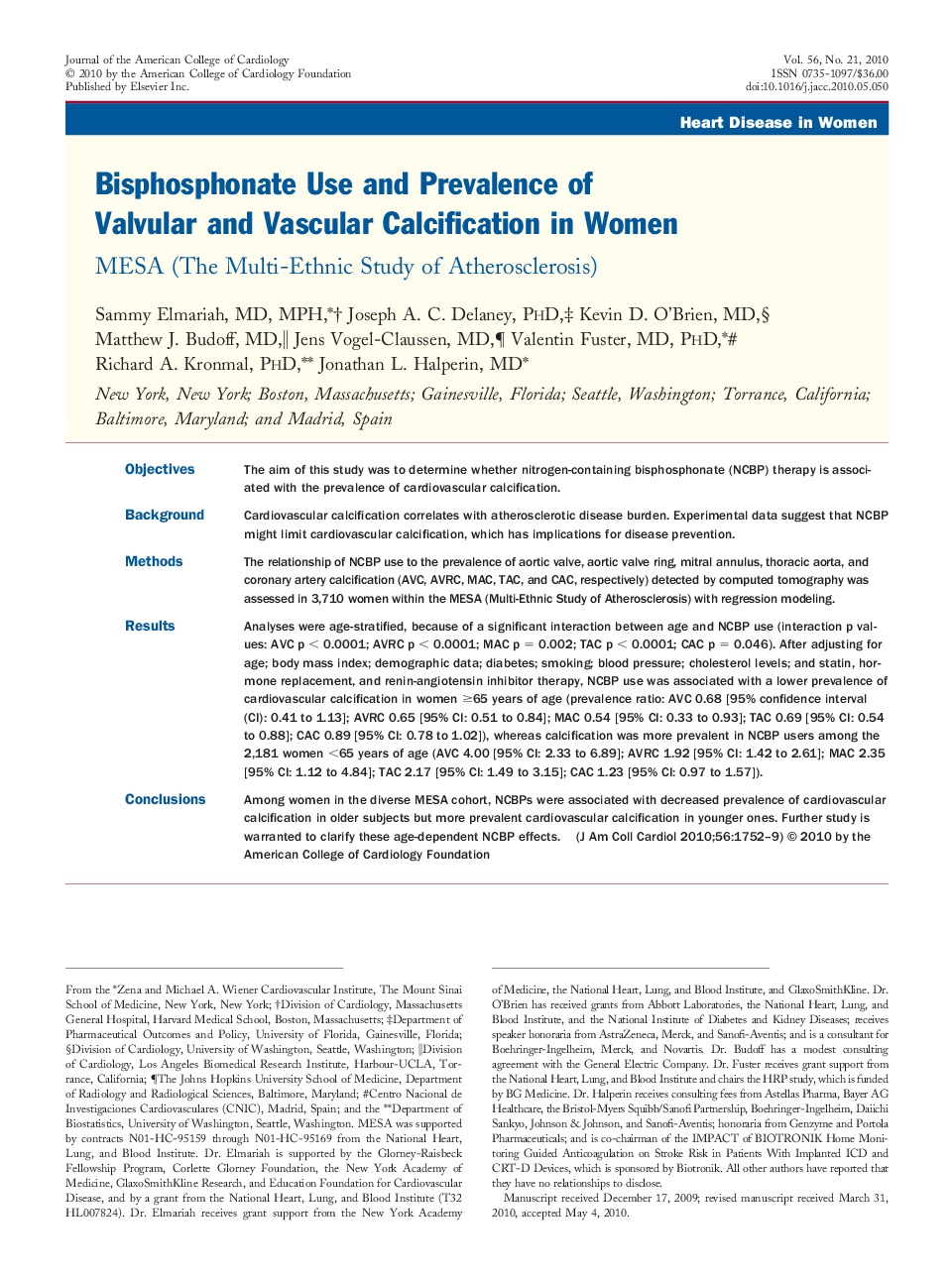| Article ID | Journal | Published Year | Pages | File Type |
|---|---|---|---|---|
| 2950064 | Journal of the American College of Cardiology | 2010 | 8 Pages |
ObjectivesThe aim of this study was to determine whether nitrogen-containing bisphosphonate (NCBP) therapy is associated with the prevalence of cardiovascular calcification.BackgroundCardiovascular calcification correlates with atherosclerotic disease burden. Experimental data suggest that NCBP might limit cardiovascular calcification, which has implications for disease prevention.MethodsThe relationship of NCBP use to the prevalence of aortic valve, aortic valve ring, mitral annulus, thoracic aorta, and coronary artery calcification (AVC, AVRC, MAC, TAC, and CAC, respectively) detected by computed tomography was assessed in 3,710 women within the MESA (Multi-Ethnic Study of Atherosclerosis) with regression modeling.ResultsAnalyses were age-stratified, because of a significant interaction between age and NCBP use (interaction p values: AVC p < 0.0001; AVRC p < 0.0001; MAC p = 0.002; TAC p < 0.0001; CAC p = 0.046). After adjusting for age; body mass index; demographic data; diabetes; smoking; blood pressure; cholesterol levels; and statin, hormone replacement, and renin-angiotensin inhibitor therapy, NCBP use was associated with a lower prevalence of cardiovascular calcification in women ≥65 years of age (prevalence ratio: AVC 0.68 [95% confidence interval (CI): 0.41 to 1.13]; AVRC 0.65 [95% CI: 0.51 to 0.84]; MAC 0.54 [95% CI: 0.33 to 0.93]; TAC 0.69 [95% CI: 0.54 to 0.88]; CAC 0.89 [95% CI: 0.78 to 1.02]), whereas calcification was more prevalent in NCBP users among the 2,181 women <65 years of age (AVC 4.00 [95% CI: 2.33 to 6.89]; AVRC 1.92 [95% CI: 1.42 to 2.61]; MAC 2.35 [95% CI: 1.12 to 4.84]; TAC 2.17 [95% CI: 1.49 to 3.15]; CAC 1.23 [95% CI: 0.97 to 1.57]).ConclusionsAmong women in the diverse MESA cohort, NCBPs were associated with decreased prevalence of cardiovascular calcification in older subjects but more prevalent cardiovascular calcification in younger ones. Further study is warranted to clarify these age-dependent NCBP effects.
